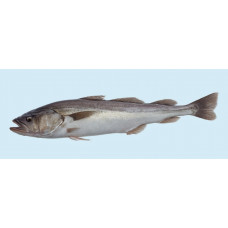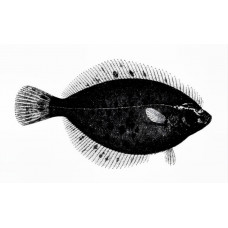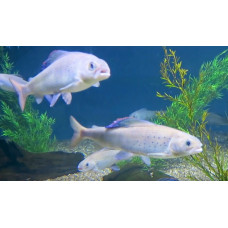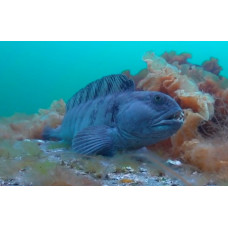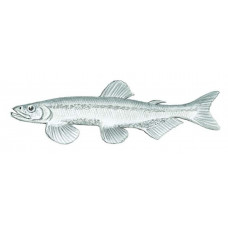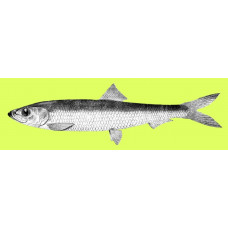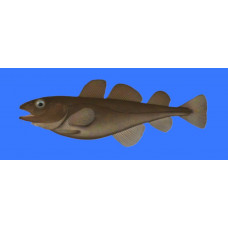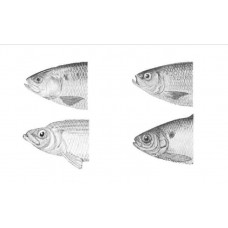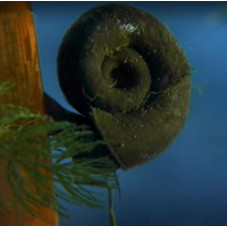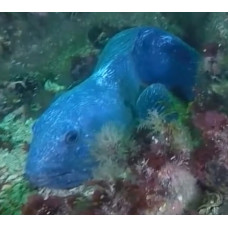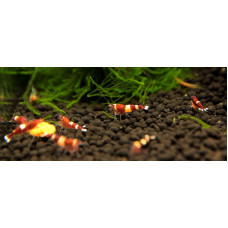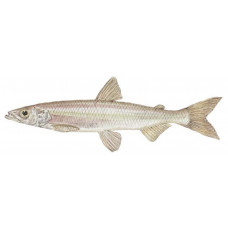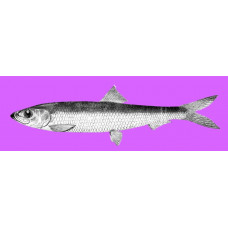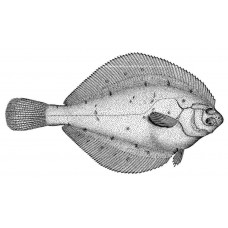Fauna of the Lincoln Sea
 It is a marginal sea of the Arctic Ocean located off the northern shores of Ellesmere and Greenland Islands. It is connected to the Baffin Sea via the Robeson, Kennedy, and Smith straits. It covers 38 thousand square kilometers, and its greatest depth is 582 meters. The rocky coastline features fjords into which glaciers descend. The surface water temperature in the summer is about -1 °C, and the salinity is 31.5 ‰. Tides are semidiurnal with a range of up to 0.8 meters, and ice is present year-round. It breaks up only in the summer, exposing small areas of water. The average monthly wind speed over the sea is about 5 m/s. Storms with maximum wind speeds of 40 m/s are common. The Lincoln Sea is one of the most ice-covered bodies of water in the Arctic. It receives ice from the Arctic basin. The ice floes drift along the northern coast of Greenland and travel southward. Many ice floes are up to 15 meters thick.
It is a marginal sea of the Arctic Ocean located off the northern shores of Ellesmere and Greenland Islands. It is connected to the Baffin Sea via the Robeson, Kennedy, and Smith straits. It covers 38 thousand square kilometers, and its greatest depth is 582 meters. The rocky coastline features fjords into which glaciers descend. The surface water temperature in the summer is about -1 °C, and the salinity is 31.5 ‰. Tides are semidiurnal with a range of up to 0.8 meters, and ice is present year-round. It breaks up only in the summer, exposing small areas of water. The average monthly wind speed over the sea is about 5 m/s. Storms with maximum wind speeds of 40 m/s are common. The Lincoln Sea is one of the most ice-covered bodies of water in the Arctic. It receives ice from the Arctic basin. The ice floes drift along the northern coast of Greenland and travel southward. Many ice floes are up to 15 meters thick.
Flora and Fauna of the Lincoln Sea
The Lincoln Sea's flora and fauna are similar to those of the neighboring Baffin and Wandel Seas. It is not known for its diversity of inhabitants. Vegetation is scarce here because the conditions are too specific. Only the hardiest plants live here. However, this scarcity does not extend to the animal inhabitants of these places. In these waters, you can find cod: Arctic cod (Arctogadus glacialis) and Greenland cod (Gadus ogac), as well as herrings: White Sea herring (Clupea pallasii marisalbi) and Chosa herring (Clupea pallasii suworowi). Flatfish include the Arctic flounder (Liopsetta glacialis) and the yellowfin sole (Limanda aspera), and capelin (Mallotus villosus) are also common. Wolf eels: The Atlantic wolffish (Anarhichas lupus) and the northern wolffish (Anarhichas denticulatus) are local residents. In addition to the species listed above, narwhals and beluga whales can be found in this cold place. The Lincoln Sea is home to seals and walruses. Unlike most northern seas, you will not find mollusks, rainbow smelt (Osmerus mordax), or Arctic grayling (Thymallus arcticus) here. Nor will you find dolphins, humpback whales, or shrimp.
Arctic cod
Latin nameArctogadus glacialisOther namePolar codIdentificationArctic cod are characterized by a thi..
Arctic flounder
Latin nameLiopsetta glacialisOther nameChristmas flounder, eelback flounder and Polar plaice.Identif..
Arctic grayling
Latin nameThymallus arcticusIdentificationThe Arctic grayling has 58 to 62 vertebrae. They have smal..
Atlantic wolffish
Latin nameAnarhichas lupusOther nameSeawolf, Atlantic catfish, ocean catfish, devil fish, wolf ee, w..
Capelin
Latin name Mallotus villosus Other names Danish/Dutch/German/ Norwegian: lodde; French: capelin a..
Chosa herring
Latin nameClupea pallasi suworowiIdentificationThe abdominal keel scales of the Chosa herring are de..
Greenland cod
Latin nameGadus ogacOther nameGadus callarias marisalbi, Gadus maris-albi Iljin, Gadus morhua marisa..
Herring
Latin name Clupea Other names American Shad, Atlantic Herring, Alewife, Threadfin Shad Identific..
Mollusca
A type of secondary invertebrate. Probably originated in the Precambrian; several classes of mollusc..
Northern wolffish
Latin nameAnarhichas denticulatusOther namesBlue sea cat, jelly catIdentificationThe body is elongat..
Shrimp
Shrimp (Caridea) - suborder Decapoda. The abdomen is muscular, longer than the thorax. Many have cla..
Smelt, Rainbow
Latin name Osmerus mordax Other names American smelt, frostfish, leefish, toothed smelt, freshwat..
White Sea herring
Latin nameClupea pallasii marisalbiOther nameClupea harengus pallasi n. marisalbi Berg, Clupea palla..
Yellowfin sole
Latin nameLimanda asperaOther namesLimanda asprella Hubbs, Pleuronectes asper Pallas.IdentificationB..

